In PE and recess, our classroom staff and North School peers tailor their interactions to more fully engage our students in movement activities, object manipulation and other experiences designed to promote physical activity and movement. Every time our students adapt their actions and movements to some aspect of the environment – a grassy field, a bridge on the play structure, a new toy, an energetic peer or the encouragement of a caring teacher – they are thinking as they move. They solve problems, learn new concepts and acquire an understanding of cause and effect as they interact on the playground or explore along our garden pathways.
Physical education encompasses a full spectrum of games, sports, fitness and movement activities. Our curriculum in physical education emphasizes the:
At The Bridge School, our education teams adapt physical education activities in ways that meet the needs of each student requiring modifications and accommodations. The accessible features of the playground and our garden area provide many opportunities for physical activities and during specially designed PE instruction, Bridge School students experience upright, self-initiated mobility in customized hands-free support walkers to explore and safely access their environment and to interact with people/objects. Our students learn skills required to engage in a range of recreation and leisure activities that afford them opportunities to learn rules of games, participate as both player and spectator, interact with new people, form friendships and access community facilities and events. Active participation in PE promotes leadership skills, teamwork, and cooperation with others. Our students gain confidence to try new experiences, accept capabilities and limitations, and develop their own unique potential.

It’s a race! During PE students do warm-ups by running laps in their hands-free walkers.
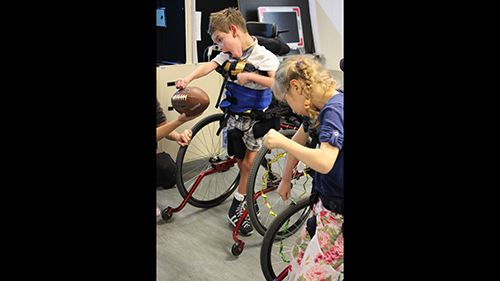
In PE students learn the basic rules and fundamentals of different games throughout the year. Adam is ready to be quarterback in an American football game.
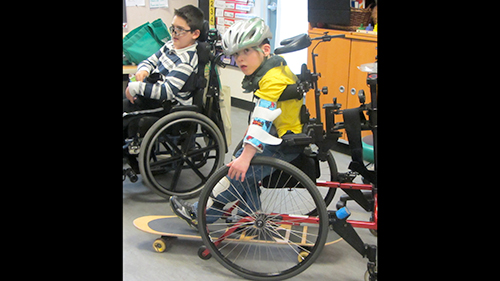
Talk about being clever! Will is trying out a skateboard in his hands-free walker.
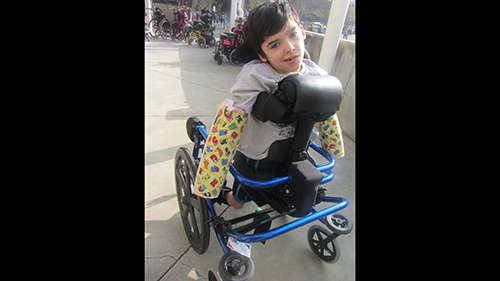
Time for recess so get out of the way! Adian is heading out to the playground in his hands-free walker.
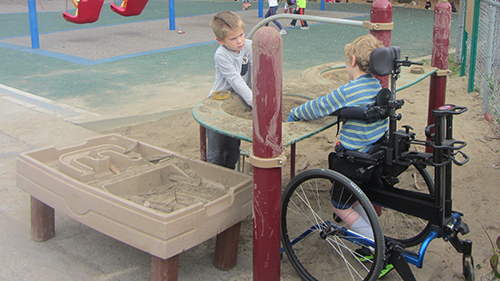
Recess is a great time to explore the playground. Jet’s hands-free walker allows him to walk up to the sandbox and play with his peers.
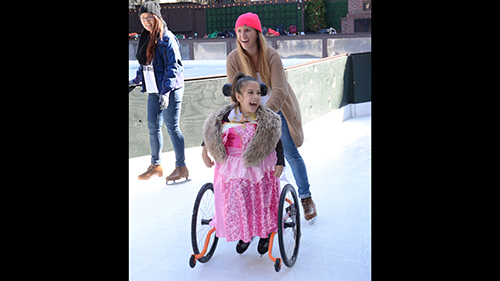
We practice ice skating during one of our PE units at school and then take our skills to a real ice skating rink. Our annual ice skating fieldtrip and our Healthy Bodies life science unit coincide to emphasize to students that healthy bodies benefit from physical activity. Disney On Ice has nothing on Jackie. She loves ice skating in her princess dress, ice skates, and hands-free walker!
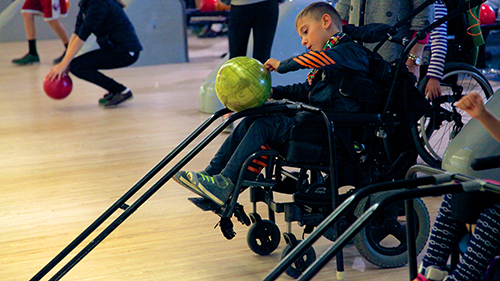
Once we’ve learned the fundamentals of bowling, we apply what we’ve learned at a real bowling alley. Fletcher is going for a strike as he pushes his bowling ball down a commercially available wheelchair bowling ramp.
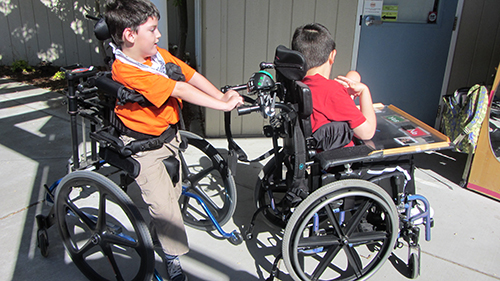
Recess is over! Job helps his friend Raul back into class.
Smith, L.B. (2006). Movement Matters: The Contributions of Esther Thelen. Biological Theory 1(1). Konrad Lorenz Institute for Evolution and Cognitive Research.